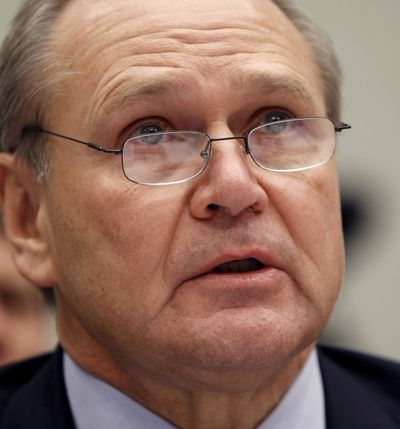Chrysler edges closer to bankruptcy
White House plan would force filing, oust automaker’s CEO

WASHINGTON – The Obama administration Wednesday night planned to send Chrysler into bankruptcy, replace chief executive Robert Nardelli and pump billions of dollars more into the effort, all in hopes the company can emerge from court proceedings as a re-energized competitor in the global economy.
Government officials clung to 11th-hour hopes Wednesday night that bankruptcy could be averted, but talks broke down with Chrysler’s creditors.
A bankruptcy filing could happen as soon as today.
The U.S. government’s attempt to save the automaker amounts to another extraordinary intervention in the economy and a landmark event in the history of the American auto industry.
Under the administration’s detailed court strategy, ownership of Chrysler would be dramatically reorganized, the leadership of Italian automaker Fiat would take over company management and the U.S. and Canadian governments would contribute more than $10 billion in additional funding.
Company and government officials had feared that a bankruptcy would stain the brand, shake customer confidence and erode sales, but the administration said it would try to use the process to create a new Chrysler company. Its ownership would be divided, with the company’s union retiree health fund receiving a 55 percent stake, Fiat would claim as much as a 35 percent share and the United States would take 8 percent. The Canadian government would receive 2 percent.
The automaker’s current majority owner, the private-equity firm Cerberus Capital Management, would have its holdings wiped out.
During the bankruptcy, the governments would provide about $4 billion in new funds, with 80 percent coming from the United States and 20 percent from Canada, which hosts a number of Chrysler operations. As the company emerged from its reorganization, the United States would provide roughly another $5 billion, with more coming from Canada, the sources said. The sources warned, however, that the figures were fluid.
Particularly striking to some economists and historians is that the plan turns over ownership of a major U.S. industrial company to an employee-run trust, a deal that is “unprecedented on this scale,” according to Harley Shaiken, a University of California at Berkeley professor and expert on unions.
The government plan also calls for ensuring that Chrysler maintains substantial U.S. manufacturing operations. It requires that at least 40 percent of company sales volumes remain manufactured domestically, or for the company’s total production in this country to remain at least at 90 percent of its U.S. production last year. “Anyway you cut it, the union is going to be a major presence at the company,” Shaiken said.
One key issue, however, will be who appoints the restructured Chrysler’s board of directors.
The government’s bankruptcy plan envisions a company with nine board seats, three of them appointed by Fiat. It does not specify who would appoint the rest.
Negotiations between the government and the company’s stakeholders – Chrysler’s lenders, the union and proposed merger partner Fiat – went well into the night, as dealmakers rushed to meet President Barack Obama’s deadline.
Wednesday night, the United Auto Workers union overwhelmingly ratified the administration proposal to give its retiree health fund the 55 percent equity stake in Chrysler. In exchange, the health fund must give up its claim to much of the $10 billion that Chrysler owes it. Eighty-two percent of production workers and 80 percent of skilled-trades workers voted for the agreement.
Fiat also continues to negotiate its merger, though the structure of that deal is in place: Fiat would get a 20 percent stake in the U.S. automaker in exchange for its small-car technology and global distribution network. If the company reaches performance milestones, it could gain as much as a 35 percent stake.
Fiat intends to form an alliance with Chrysler even if the company goes into bankruptcy, said a source familiar with the talks; the Italian carmaker has been, “like everyone else, sitting around waiting for the rest of the lenders to strike a deal.”